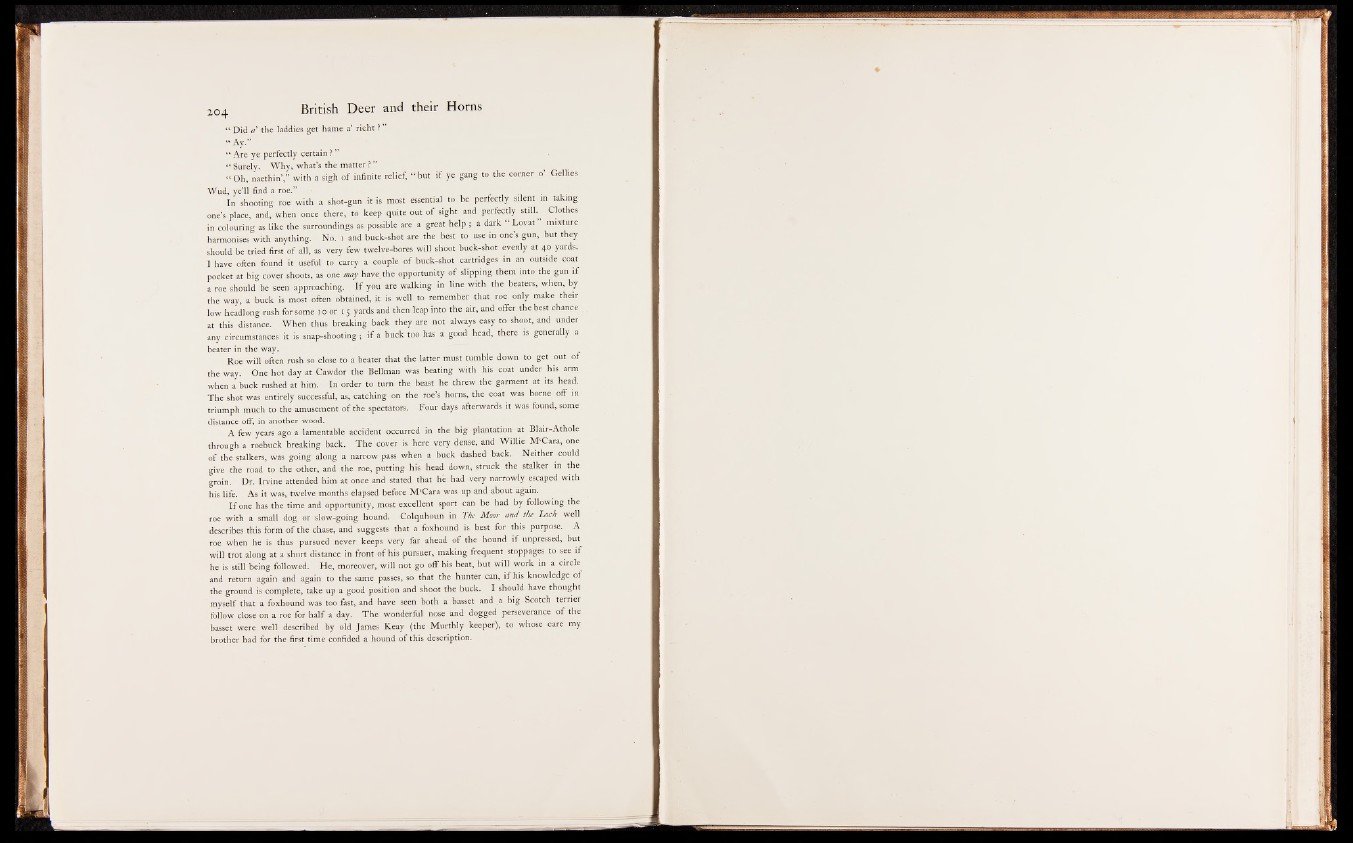
“ Did a’ the laddies get hame a’ richt ? ”
“ A y .”
“ A re ye perfectly certain ? ”
“ Surely. Why, what’s the matter ? ”
“ Oh, naethin’,” with a sigh o f infinite relief, “ but i f ye gang to the corner o' GeMies
Wud, ye’ll find a roe.”
In shooting roe with a shot-gun it is most essential to be perfectly silent in taking
one’s place, and, when once there, to keep quite out o f sight and. perfectly still. Clothes
in «»louring as like the surroundings as possible are a great help ; a dark mixture
harmonises with anything. No. i and buck-shot are the best to use in one's gun, but they
should be tried first o f all, as very few twelve-bores will shoot buck-shot evenly at 40 yards.
I have often found it useful to carry a couple of buck-shoP cartridges in an outside coat
pocket at big cover shoots, as one-may have„the opportunity o f slipping them |jfSsdhe gun i f
a roe shou ||b e seen approaching. I f you are walking in line with the heaters, when, by
the way, a buck is most often obtained, if is. well to remember that roe only make their
low headlong rush for some io or 1 5 yards and then leap into the air, and offer the best chance..
at this distance. When thus breaking back they are not always easy to shoot, and under
any circumstances it is snap-shooting^|if a buck t g h a s a good head, there is generally a
beater in the way.
Roe will often rush so close to a beater that the latter must tumble down to get out of
the way. One hot day at Cawdor the Bellman was beating with his coat under his arm
when a buck rushed at him. In order to turn the beast he threw the garment at its head.
The shot was entirely successful, as, catching on the roe’s horns, the coat was borne off in
triumph much to the amusement o f the spectators. Four days afterwards it was found, some
distance off, in another wood.
A few years ago a lamentable accident occurred in the big plantation at Blair-Athole
through a roebuck breaking back. The cover is here very dense, and Willie M ‘Cara, one
o f the stalkers, was going along a narrow pass when a buck dashed back. Neither could
give the road to the other, and the roe, putting his head down, struck the stalker in the
groin. Dr. Irvine attended him at once and stated that he had very narrowly escaped with
his life. As it was, twelve months elapsed before M ‘Cara was up and about again.
I f one has the time and opportunity, most excellent sport can be had by following the
roe with a small dog or slow-going hound; Colquhoun in The Moor and the .Loch well
describes this form o f the chase, and suggests that a foxhound is best for this purpose. A
roe when he is thus pursued never keeps very far ahead o f the hound i f unpressed, but
will trot along at a short distance in front o f his pursuer, making frequent stoppages to see i f
he is still being followed. He, moreover, will not go off his beat, but will work in a circle
and return again and again to the same passes, so that the hunter can, i f his knowledge of
the ground is complete, take up a good position and shoot the buck. I should have thought
myself that a foxhound was too fast, and have seen both a basset and a big Scotch terrier
follow close on a roe for half a day. The wonderful nose and dogged perseverance o f the
basset were well described by old James Keay (the Murthly keeper), to whose care my
brother had for the first time confided a hound of this description.